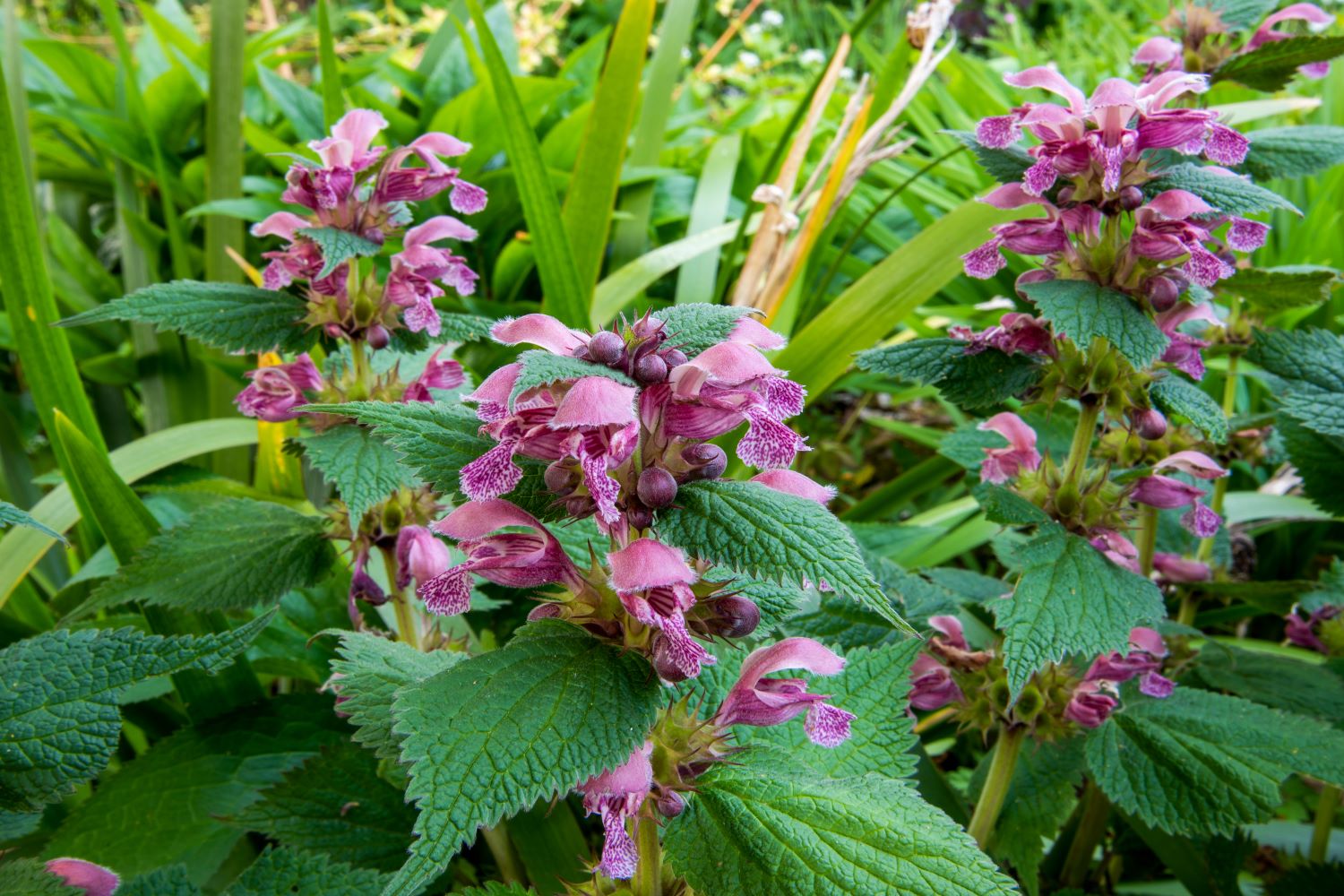
Dead nettle, despite its ominous name, is a fascinating plant with a lot to offer. Did you know that this plant isn't actually related to stinging nettles? Instead, it's a member of the mint family. Dead nettle is often found in gardens and wild areas, known for its heart-shaped leaves and small, tubular flowers. But what makes it special? For starters, it's a favorite among pollinators like bees and butterflies. Additionally, dead nettle has been used in traditional medicine for centuries, believed to help with everything from wounds to respiratory issues. Curious about more? Let's dive into 34 intriguing facts about this unique plant.
What is Dead Nettle?
Dead nettle, also known as Lamium, is a fascinating plant often found in gardens and wild areas. Despite its name, it isn't related to stinging nettles and doesn't sting. Let's dive into some intriguing facts about this unique plant.
-
Dead nettle belongs to the mint family. Its square stems and opposite leaves are typical characteristics of mint plants.
-
It’s called "dead" because it doesn’t sting. Unlike stinging nettles, dead nettles have no irritating hairs.
-
There are over 40 species of dead nettle. These species vary in color, size, and habitat preferences.
Appearance and Growth
Dead nettle is known for its attractive foliage and flowers. It’s a hardy plant that can thrive in various conditions, making it a popular choice for gardeners.
-
Leaves are often heart-shaped. They can be green, silver, or variegated, adding visual interest to gardens.
-
Flowers come in different colors. You can find dead nettle flowers in shades of white, pink, purple, and yellow.
-
Blooms from spring to early summer. This long blooming period provides continuous color in gardens.
-
Grows well in shade. Dead nettle is perfect for shady spots where other plants might struggle.
-
Can be invasive. Some species spread quickly and can take over garden spaces if not managed.
Uses and Benefits
Beyond its beauty, dead nettle has several uses and benefits, both in the garden and for health.
-
Attracts pollinators. Bees and butterflies love dead nettle flowers, making it great for pollinator gardens.
-
Ground cover. Its dense growth habit helps suppress weeds and protect soil.
-
Edible leaves and flowers. Young leaves and flowers can be eaten raw or cooked, adding a mild flavor to dishes.
-
Medicinal properties. Traditionally used to treat wounds, inflammation, and digestive issues.
-
Rich in vitamins and minerals. Contains vitamins A and C, iron, and calcium.
Historical and Cultural Significance
Dead nettle has a rich history and cultural significance in various parts of the world.
-
Used in traditional medicine. Ancient cultures used it for its healing properties.
-
Symbol of resilience. Often seen as a symbol of resilience and endurance due to its hardy nature.
-
Folklore associations. In some cultures, it’s believed to ward off evil spirits.
Growing and Caring for Dead Nettle
Growing dead nettle is relatively easy, making it a favorite among novice and experienced gardeners alike.
-
Prefers moist, well-drained soil. While it can tolerate various soil types, it thrives in moist conditions.
-
Can tolerate drought. Once established, dead nettle can survive periods of drought.
-
Low maintenance. Requires minimal care, making it ideal for low-maintenance gardens.
-
Propagates easily. Can be propagated by division or cuttings.
-
Prune to control spread. Regular pruning helps keep its growth in check.
Interesting Facts
Here are some more quirky and interesting facts about dead nettle that you might not know.
-
Also known as "archangel". Some species are referred to as archangels due to their angelic-looking flowers.
-
Used in dyeing. Historically, dead nettle was used to produce yellow and green dyes.
-
Deer resistant. Deer tend to avoid dead nettle, making it a good choice for areas with high deer populations.
-
Can be used in compost. Adds valuable nutrients to compost piles.
-
Natural insect repellent. Some gardeners use it to repel pests naturally.
-
Can grow in containers. Ideal for small spaces or urban gardens.
-
Helps prevent soil erosion. Its dense root system helps stabilize soil.
-
Can be used as a living mulch. Protects soil and retains moisture around other plants.
-
Has a mild, sweet scent. The flowers emit a pleasant fragrance.
-
Can be found in wild areas. Often grows in meadows, forests, and along roadsides.
-
Used in herbal teas. Leaves can be dried and used to make soothing teas.
-
Attracts beneficial insects. Helps control garden pests by attracting predators.
-
Can be a companion plant. Grows well with other shade-loving plants like hostas and ferns.
The Final Word on Dead Nettle
Dead nettle is more than just a pretty plant. It's packed with medicinal properties, making it a natural remedy for various ailments. From soothing inflammation to aiding digestion, this plant has been used for centuries in traditional medicine. Its edible leaves and flowers add a nutritious boost to salads and teas. Plus, it's a favorite among pollinators, helping to support local ecosystems.
Whether you're a gardener, herbalist, or just someone who loves learning about plants, dead nettle offers something for everyone. Its vibrant colors and hardy nature make it a great addition to any garden. And let's not forget its historical significance and cultural importance.
So next time you see dead nettle, you'll know it's not just a weed. It's a plant with a rich history and a lot to offer. Happy gardening!
Was this page helpful?
Our commitment to delivering trustworthy and engaging content is at the heart of what we do. Each fact on our site is contributed by real users like you, bringing a wealth of diverse insights and information. To ensure the highest standards of accuracy and reliability, our dedicated editors meticulously review each submission. This process guarantees that the facts we share are not only fascinating but also credible. Trust in our commitment to quality and authenticity as you explore and learn with us.
